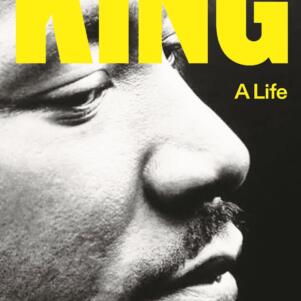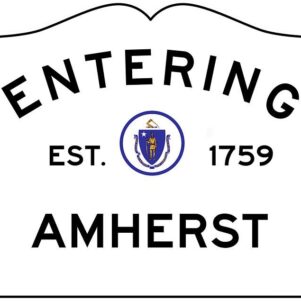What’s In the Worcester Sex Curriculum? Details … Explicit Language Warning
By Tom Joyce | May 3, 2021, 5:33 EDT

A sex education curriculum that has divided parents and school committee members in Worcester is expected to go to a vote later this week.
The Worcester School Committee, which sets policy for the public schools in the second largest city in Massachusetts, is set to decide on whether to adopt the curriculum Thursday, May 6.
The curriculum, called Rights, Respect, Responsibility, is published by Advocates for Youth.
In Worcester, school officials are seeking to use the curriculum in grades 7 through 9, though some supporters have called for using the full kindergarten-through-12th-grade version.
So what’s in it?
NewBostonPost examined lesson plans from the curriculum late last week. Excerpts from lesson plans for grades 6 through 12 are below. Quotations from the curriculum are in this font.
Grade 6 Lesson 6: Liking and Loving
This lesson plan deals with relationships and while it says students should wait until they are older to have sex, it tells the instructor to describe different types of sex.
Excerpt:
Say, “One behavior that people your age should wait to do together until they are older is ‘sexual intercourse.’ How many people have heard this term before? What have you heard it means?” Have a few students respond, validating what is correct.
Say, “Other behaviors include: oral sex, which is contact between one person’s mouth and another person’s genitals; anal sex, which is when a person’s penis goes inside a person’s anus; and vaginal sex, which is when a person’s penis goes inside a person’s vagina.”
Like all other lessons in this curriculum, it comes at the top with “a note about language” advising the instructor that the curriculum authors chose their language carefully to be gender-neutral and inclusive to people who don’t identify with their biological sex.
Excerpt:
You may notice language throughout the curriculum that seems less familiar — using the pronoun “they” instead of “her” or “him,” using gender neutral names in scenarios and role-plays and referring to “someone with a vulva” vs. a girl or woman. This is intended to make the curriculum inclusive of all genders and gender identities. You will need to determine for yourself how much and how often you can do this in your own school and classroom, and should make adjustments accordingly.
Grade 6 Lesson 7: Being a Sex Ed Sleuth
This lesson plan contains an in-class group assignment for students to look at web sites where young people can find accurate sex ed info. One of them is Planned Parenthood’s web site.
Excerpt:
Sex Ed Sleuth Assignment C: “Planned Parenthood”
www.plannedparenthood.org/learn/birth-control
- You need to find information about preventing pregnancy. Does this site seem to have reliable/accurate information? What do you base that on?
- Who’s behind the website? Look at the “about us” link. Does that make the site more or less reliable? Why?
- Is the website content up to date? How do you know?
- Is this a site you’d visit to get more information about sexuality and sexual health? Why or why not?
The creators of this curriculum consider Planned Parenthood a reliable source, as they indicate to high school students.
Grade 7 Lesson 10: Being the Change
This lesson plan is pro-homosexuality and pro-transgender. It tells the instructor that one of the objectives of the lesson plan is for students to be able to “Describe at least one situation in which a young person was discriminated against because of their gender or sexual orientation, and the steps they took to advocate for change that would end that discrimination.”
The homework assignment that comes with this lesson is a worksheet that gives students three options of videos to watch on gender and sexual orientation issues. The third option is one about a biologically female 15-year-old high school student named Gavin Grimm who identifies as a boy and wants to use the boys’ restroom at school, something the district no longer allows. The news story it links to provides no counterargument as to why people may oppose the measure.
The assignment asks students the following questions:
Why do you think Gavin feels so strongly about being able to use the boys’ restroom?
What steps has he taken to make a change at his school?
What do you think should happen? Based on your thoughts, what should Gavin do in response? The school?
Grade 8 Lesson 1: Creating a Safe School
The objective of this lesson is for students to know what they can do to improve “LGBTQ inclusion” at their schools, what their school “does well around LGBTQ inclusion, as well as two things it could do better.”
In class, the students fill out a worksheet with checkboxes for an assignment called “Is Our School LGBTQ-Inclusive?” The options include: “We Totally Do This!” “We Kind Of Do This” “We Don’t Do This” “Don’t Know/Doesn’t Apply.”
Here are a few of the topics on that list, with the corresponding numbers:
4. There are gender-neutral or private bathrooms or changing areas, not just “Boys” and “Girls” rooms and locker rooms
7. Assignments include LGBTQ people or issues
9. Our sports teams and other activities include LGBTQ students
10. School’s publications cover LGBTQ people and issues
The lesson also asks students the following questions when they’re done checking boxes:
Which of the things listed above do you think our school could do better on?
What steps could you, as students, take to make these changes happen? Select one of the things you feel the school could do better on, and three specific actions you and other students can take to see those changes take place.
The lesson plan contains no explanations as to why someone may oppose such things — such as biologically male, transgender students competing in girls sports.
Grade 8 Lesson 9: Using Condoms Effectively
The age of consent in Massachusetts is 16 years old, but this lesson plan designed for 13-year-olds and 14-year-olds to show them how to use condoms correctly with either a “wooden penis model or banana” as the model.
Excerpt:
Go around the room and ask each group to provide one of the steps in order (so group one would say, “check the expiration date”). As each step is read in the correct order, model doing that step. Show the students, for example, where the expiration date is on the condom wrapper; demonstrate which way is the right way up to place the condom on the head of the penis, and so on. Be sure to highlight that you have several external condoms with you, which is a good idea in general; if one were to tear, fall on the floor, etc., you couldn’t re-use it.
It also includes steps on how to use a female condom and notes that the teachers have a “plastic pelvic model” to use to show how to put the condom in the “vaginal opening.” The lesson plan also tells the instructor to let students know that they can use this kind of condom for anal sex.
Excerpt:
Say, “People have referred to this condom as a ‘female’ condom, but this can be used by someone of any gender for either penis-vagina sex or during anal sex if the couple removes the interior ring.”
Grade 9 Lesson 4: Orientation Behavior and Identity
Is the term straight appropriate? This lesson plan includes a “yellow flag list” of words that people should use with caution and suggests alternative terms. The lesson plan tells the instructor to explain to the class why they are yellow flag terms.
Instead of “homosexual,” for instance, it says to use gay or lesbian.
Excerpt:
“Homosexual” was used as a mental health diagnosis until the early 1980s when it was no longer seen as a mental disorder by the American Psychological Association. Today, “homosexual” is often shortened to “homo,” which is used as an insult to people who are or are perceived to be gay (or to heterosexual people to mean they’re stupid, like “that’s so gay”). Yet, it is also an accurate category of sexual orientation that some people still use. If someone identifies as “homosexual,” someone else can’t say “you can’t use that term.” It’s their right to use whatever term feels right to them.
However, the lesson plan says students should not use the term “straight.” Instead, it says to use “heterosexual.”
Excerpt:
The opposite of “straight” is “bent” or “crooked.” This can imply that there is something wrong with someone who is not heterosexual.
So what is a heterosexual, according to this lesson plan? It’s, “someone who is only attracted to people of a different gender.”
By that definition, a male attracted to a biologically male person who identifies as a female would be straight.
However, the Merriam-Webster dictionary definition of heterosexual says that it means “of, relating to, or characterized by sexual or romantic attraction to or between people of the opposite sex.”
Grade 9 Lesson 9: What If
This lesson plan promotes abortion, never explaining what an abortion is or why there are people who oppose abortion. It instructs the teacher to tell people to have an abortion as quickly as possible if they want one.
Excerpt:
Say, “The earlier a person starts doing these healthy things and avoiding these unhealthy things, the healthier they and the fetus should be throughout the pregnancy. Now, if they choose not to continue the pregnancy and have an abortion, they also need to do that as early in the pregnancy as possible. Up to 49 days or 7 weeks, they can have an abortion by taking medication; after 49 days or 7 weeks, they need to go to a doctor or clinician. In some states, they can only have an abortion up until a certain point in the pregnancy. Each state is different, so it’s important to know what the law is wherever you’re living.”
The lesson centers on three responses to an unexpected pregnancy: having a child, adoption, and abortion.
It includes a worksheet activity asking “Why Would Someone Choose to End A Pregnancy?” It then instructs students to list as many reasons as possible why a teen-ager might have an abortion and why they might not.
Unlike certain other sex ed curriculums, the lesson contains no mention of the state’s safe haven law or fetal development. The state’s safe haven law, as NewBostonPost has reported, allows a mother to drop off her unharmed newborn at a hospital, police station, or fire station within seven days of birth without repercussions and without providing any personal information
Grade 10 Lesson 2: Know Your Options
This lesson focuses on the various kinds of birth control people can use to try to prevent an unexpected pregnancy if they are sexually active, as well as other uses of these items. For instance:
STEP 1: Introduce the topic by saying, “Today we’re going to look at contraception or birth control such as abstinence, the pill, condoms, the shot, etc. Specifically, we’re going to look at what might affect a person’s decision to use birth control, whether to prevent pregnancy and/or for the other reasons that have nothing to do with sex. Let’s start by brainstorming why a person might want to use birth control for either sexual or non-sexual reasons.” Note to the Teacher: Create two columns on the board and write in one column all of the reasons the students suggest, making sure to include the following if students don’t suggest them:
-
don’t want to start a pregnancy
-
don’t want to get an STD
-
want to have shorter periods
-
want to have lighter periods
-
need to regulate hormones because of a health issue
-
want to reduce acne
-
want to have predictable periods
-
want to have less cramping during periods
It tells the teacher to ask who most of the list applies to and that if the students say women and girls, to tell them the correct answer is “People with ovaries or a uterus.”
It also tells the teacher to tell the students that these concerns apply to more than just straight couples:
We typically tend to think of different-sex couples as being the only ones at risk for pregnancy. But some of these concerns apply to all people regardless of their sexual orientation or gender. Please keep that mind as we go through the lesson.
Grade 10 Lesson 3: We All Have Rights
This lesson focuses on abortion once again with a class exercise and a homework assignment.
The lesson material lets children know how they can get an abortion without their parent or guardian’s permission. The age of consent in Massachusetts is 16 years old; 10th graders are typically 15 to 16 years old.
Classroom exercise excerpt:
In some cases, however, the decision they make may require parental consent or notification. For example, in our state, a teen who chooses to have an abortion must [have parental consent, notify one or both parents – fill in the information relating to your state from http://www.guttmacher.org/statecenter/spibs/spib_PIMA.pdf]. In most cases, states that require parental consent or notification also have alternate legal procedures in place for teens. For example, a teen can go to a judge to have permission granted to have the abortion. This is called “judicial bypass.”
The second question on the homework assignment — which includes links for students to look over to learn more about abortion rights and what role the father plays — says the following:
If I/my partner want to have an abortion, but live in a state where I/they can’t get one, what are the options?
The homework includes a link to the Web site Legal Match which informs minors that they can bypass both parental and judicial consent to have an abortion if they go to another state, traveling with a different relative.
Grade 10 Lesson 7: Trust it or Trash It
This lesson includes “Accurate and Reliable Sexual Health Resources for Teens.” One of those resources is Planned Parenthood, the largest abortion provider in the country. It includes both a link to the Planned Parenthood Web site as well as Planned Parenthood’s 1-800 number.
Grade 11 Lesson 5: Gender and Sexual Orientation
This lesson focuses on sexuality once again and reinforces the curriculum’s stance that sexual orientation is based on the gender identity of the partner, not the partner’s biological sex.
Excerpt:
Say, “Sexual orientation has to do with the gender or genders of the people to whom we are attracted, both physically and romantically. This is different from our sense of what our gender is. We all have both a gender identity and a sexual orientation. For example, a person whose biology at birth was characterized as “female” and who also feels female on the inside [write a woman symbol on the board] who is attracted only to people whose biology at birth was characterized as “male” and who also feel male on the inside [write a man symbol on the board, followed by an equal sign] will likely identify as heterosexual. If she does, the fact that she identifies as a woman [circle the woman symbol] and that the partners she’s attracted to identify as men [circle the man symbol] – these are their gender identities. The fact that they’re attracted to each other [circle heterosexual in a different color] is their sexual orientation.”
Grade 12 Lesson 5: Fantasy vs Reality
The lesson includes a PowerPoint presentation about what it calls “sexually explicit media.” It explains that “sex sells” in marketing and includes covers of many publications, including pornographic magazines like Playboy, Penthouse, and Playgirl, among others.
The slideshow also includes a few takeaways at the end for the students to remember.
Excerpt:
Viewing SEM is not considered a negative by everyone but people should keep in mind that it is fantasy and not reality.
Viewing ANY kind of media to excess (like playing video games) can be seen as compulsive behavior and should be checked out.
New to NewBostonPost? Conservative media is hard to find in Massachusetts. But you’ve found it. Now dip your toe in the water for two bucks — $2 for two months. And join the real revolution.











